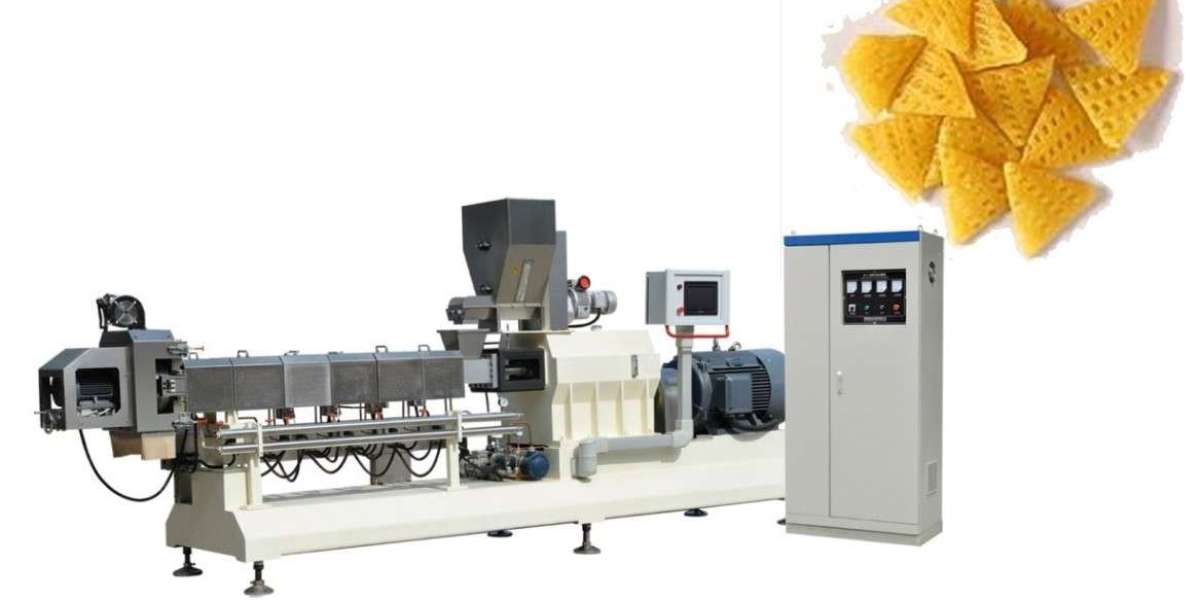3D Snack Pellet Machine: Revolutionizing Snack Production
In today’s fast-paced food industry, innovation plays a pivotal role in meeting evolving consumer demands. One such groundbreaking innovation is the 3D Snack Pellet Machine, a specialized piece of equipment designed for the production of three-dimensional snack pellets. These machines are reshaping how snack products are manufactured, offering versatility, efficiency, and high-quality output. From uniquely shaped treats to healthier baked options, 3D snack pellet machines are becoming essential in the modern snack manufacturing landscape.
What Is a 3D Snack Pellet Machine?
A 3D snack pellet machine is a type of food processing equipment used to produce raw snack pellets in various three-dimensional shapes. These pellets are typically semi-finished products, which are later expanded through frying or hot air puffing to become crispy snacks. Unlike traditional flat or extruded snacks, 3D snacks can take on complex, eye-catching shapes such as stars, wheels, spirals, tubes, and other creative forms.
This machine is a part of a larger extrusion processing line, where raw materials such as potato starch, corn starch, wheat flour, rice flour, or other grains are mixed, cooked, extruded, shaped, and cut into specific designs. The flexibility and control offered by the 3D snack pellet machine allow manufacturers to create a wide array of textures and appearances, making it a valuable tool for brands seeking product differentiation in a competitive market.
How Does It Work?
The 3D snack pellet machine operates through a sophisticated twin-screw extrusion process, which combines mechanical and thermal energy to cook and shape the ingredients. Here's a simplified breakdown of the process:
Mixing and Preconditioning: Raw materials are blended with water and other additives in a mixer to form a uniform dough.
Extrusion: The dough is fed into the twin-screw extruder, where it is subjected to high pressure and temperature. The screws knead and push the material through a die.
Shaping: The dough passes through specially designed molds or dies that shape it into 3D patterns. These can be customized depending on the desired snack appearance.
Cutting: A rotating knife or cutter trims the extruded material into uniform pellet sizes.
Drying: The pellets are then dried to reduce moisture content, making them shelf-stable and suitable for packaging or later expansion (e.g., frying, roasting, puffing).
Flavoring (Optional): Depending on the production setup, flavorings can be added after expansion in a separate step.
The process is continuous and highly automated, ensuring consistency and scalability for large-scale production.
Key Features and Advantages
Investing in a 3D snack pellet machine offers numerous benefits to food manufacturers:
1. Product Variety
The ability to create diverse shapes and textures opens the door to unlimited product innovation. This allows manufacturers to cater to various consumer preferences, cultural tastes, and age groups.
2. Customization
Manufacturers can easily switch molds to produce different snack shapes or adjust parameters to create varying textures. This makes it ideal for contract manufacturers or brands wanting to launch limited-edition snacks.
3. High Output Efficiency
Modern 3D snack pellet machines are designed for continuous, high-capacity production, helping companies meet large market demands without compromising on quality.
4. Reduced Waste
The precise nature of the extrusion and shaping process minimizes ingredient waste, making the operation more sustainable and cost-effective.
5. Energy Efficient
With advanced heating systems and efficient motor designs, these machines optimize energy consumption, reducing overall production costs.
6. Ease of Operation
Touch-screen interfaces and PLC control systems allow operators to monitor and adjust production parameters in real time, ensuring consistency and ease of use.
Applications in the Food Industry
The snacks created using 3D pellet machines are popular globally and cater to a wide variety of markets:
Children’s snacks: Fun shapes and crunchy textures appeal to younger consumers.
Health-conscious snacks: Non-fried versions made from rice or multigrain flour cater to health trends.
Flavored snacks: Post-processing flavoring allows for bold, regional, or exotic tastes.
Private label products: Many supermarkets and retailers use these machines to create unique snack products under their brand names.
In addition to human consumption, some manufacturers have adapted the technology to produce pet snacks with similar extrusion techniques.
Market Trends and Demand
The global snack food market has seen steady growth, driven by urbanization, increased disposable income, and changing dietary habits. According to recent industry reports, consumers are increasingly looking for convenient, ready-to-eat, and novel snack options, which makes 3D snack pellets a perfect fit.
With the rise of social media and influencer marketing, aesthetically appealing snack products that offer unique experiences are in high demand. This trend further boosts the relevance of 3D snack pellet technology, which enables intricate designs that are Instagram-worthy and marketable.
Conclusion
The 3D snack pellet machine is not just a piece of equipment—it is a powerful innovation that aligns with the future of snack manufacturing. Its ability to create diverse, visually engaging, and delicious products makes it an indispensable tool for snack producers aiming to stay ahead of trends. As consumer preferences continue to evolve, embracing advanced machinery like the 3D snack pellet machine is essential for companies seeking to innovate, scale, and thrive in a competitive global market.
Whether you’re a startup snack brand or an established food manufacturer, investing in this technology could be the key to unlocking new opportunities in the world of savory snacks.














